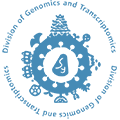Mechanism of Persistent Infection for the Human T-cell Leukemia Virus

HTLV-1 is a type of retrovirus known to cause adult T-cell leukemia (ATL). It is currently estimated that there are at least 30 million infected people in the world. Most are asymptomatic HTLV-1 carriers who won’t be affected by further disease, but a few (3-5%) will develop leukemia or chronic inflammatory disease. Adult T-cell leukemia (ATL) is an intractable blood cancer with a low incidence rate but poor prognosis. Moreover, it is a form of refractory leukemia in which the leukemic cells does not respond well to currently available treatment. The main trait of a retrovirus infection is that the virus DNA integrates with the original DNA of a host cell, thereby making it extremely difficult to recognize and treat. Viral DNA that is incorporated into a host cells’ DNA is able to avoid the immune mechanism and the actions of anti-retroviral drugs since the host cell considers the viral DNA as its own. This is a major obstacle in attempting to completely eliminate the virus from the body of an infected person. Our lab, in collaboration with researchers from Imperial College London, has revealed that the key factor in HTLV-1 infection is CTCF. CTCF is a type of cell-derived protein and functions to determine how genes are sterically folded into DNA. Our research revealed that CTCF binds directly to the already integrated HTLV-1 viral DNA and controls the mechanisms that promote persistent infection. This result will be useful in contributing to the development of new forms of prevention and treatment of HTLV-1. [Journal Information] Title : The retrovirus HTLV-1 inserts an ectopic CTCF-binding site into the human genome Journal: Proceedings of the National Academy of Sciences of the United States of America
